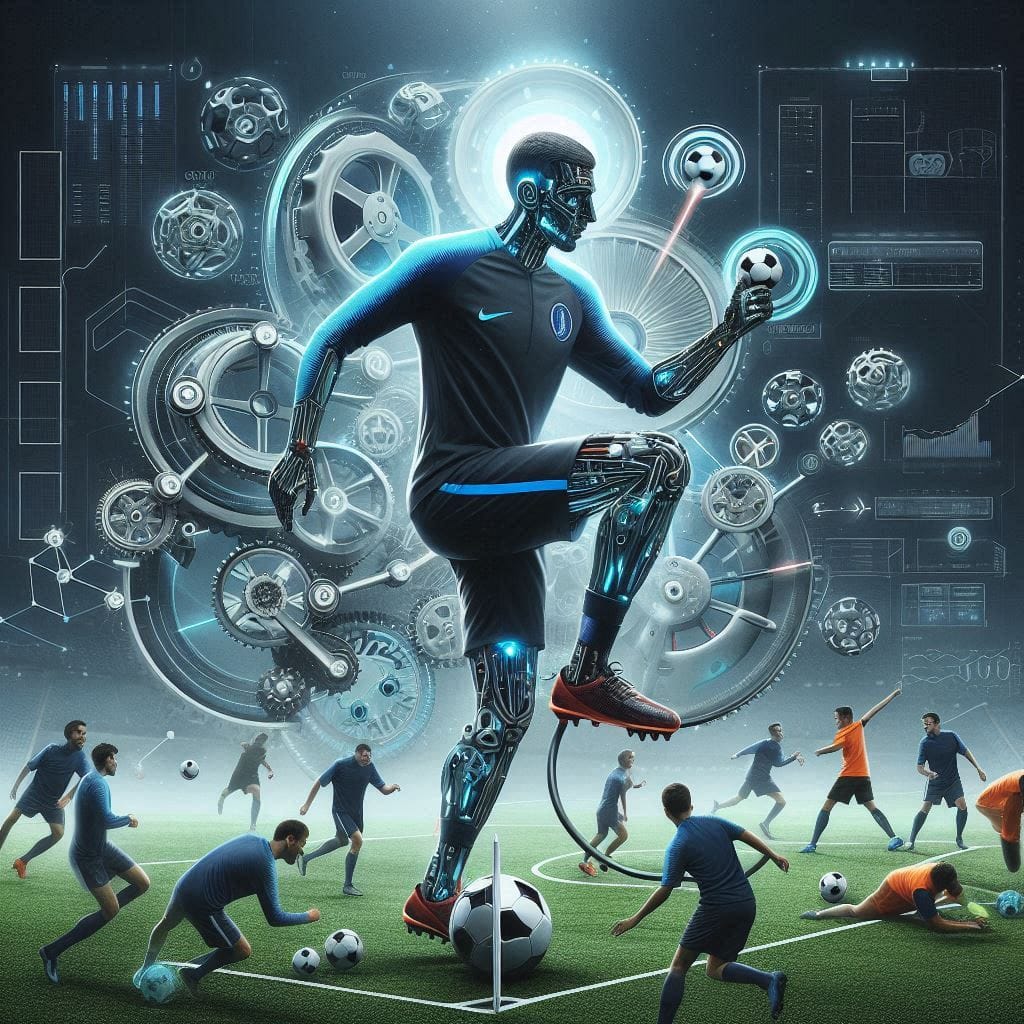Decalogue for the implementation of infrastructures in modern football clubs and academies, focused on innovation and maximizing player performance:
1. Strategically Located Gym: The gym should be located between the locker rooms and the training ground. This ensures that players, both at the beginning and at the end of practice, go through the gym, encouraging the inclusion of fitness and recovery sessions before and after the main training. It facilitates a comprehensive approach to player preparation and recovery.
2. PONS Method Space: The PONS Method must have a specialized space for individual and semi-collective training. This space must have giant screens for the visualization of movements in real time, and technological gamification tools that allow players to see their movements, synergies and actions before and after exercise. In this way, immediate technical correction and better understanding of tactics and physical performance are facilitated.
2. PONS Method Space: The PONS Method must have a specialised space for individual and semi-collective training. This space must be equipped with interactive technological panels that offer immediate feedback to players on their movements and performance. These panels will allow key information to be displayed on the techniques and tactics being worked on, facilitating real-time correction and detailed analysis.
In addition, this space must have increasingly elaborate software that includes the principles of the PONS Method, allowing training to be personalised and adapted according to the characteristics and needs of each player. This software must integrate the specific instructions of each head coach, so that the training approach is consistent with the club’s philosophy and objectives. Gamification tools will complement this infrastructure, allowing players to visualise their movements, synergies, actions and progressions before and after exercises, making this space a highly effective and technologically advanced environment for football development.
This approach will allow for precise tailoring of training at an individual level, optimising performance in both the short and long term, and ensuring that all players receive training aligned with the club’s methodology.
3. Gamified Small Spaces: Create specific areas for small space games and exercises, gamified to increase focus, creativity and decision making under pressure. The goal is to improve players’ reaction capacity and technical ability in a fun and challenging environment, where players face various challenges that emulate real game situations.
4. Magic Box for Technical Training: The “Magic Box” is a closed and controlled space for advanced technical training of players. It should have devices for automatic ball launching and sensors that measure precision, power and frequency of shots. In addition, this environment could incorporate screens and moving targets for players to work on passing and shooting situations, perfecting technique in a controlled environment.
5. CESPEED (Speed and Power Training Center): A dedicated area for speed training, with dedicated sprint lanes, resistance systems, and platforms to measure acceleration, balance, and strength. The CESPEED should feature technology that records player performance, allowing specific programs to be tailored to improve speed and explosive power.
6. Observation and Analysis Balconies: Installation of elevated balconies above the training field, equipped with high-definition cameras and analysis monitors. These balconies allow coaches and analysts to observe training from a higher and more comprehensive perspective, capturing details of tactical positioning and player disposition during sessions.
7. Adaptive Training Equipment: Providing the club with specialized equipment such as balls of different weights, harnesses, parachutes, and smart balls that provide data on strokes and usage patterns. This material encourages technical and physical improvement in a specific way, and helps to evaluate the performance of the players in a detailed way.
8. Specialized Calisthenics Facilities: A calisthenics space designed especially for soccer players, with modular structures to work on functional strength and soccer-specific movements. These areas should include bars, rings, ropes, and other elements to develop strength, flexibility, and body control, aligned with the needs of the sport.
9. Recovery and Rehabilitation Areas: Create adequate recovery areas with contrast pools (hot/cold), cryotherapy cabins, and stretching areas. These areas allow players to make an optimal recovery after training and matches, preventing injuries and ensuring physical availability throughout the season.
10. Individual and Collective Analysis Areas: Spaces equipped with advanced audiovisual technology, where coaches and players can review videos and data from their training sessions and matches. This analysis should incorporate artificial intelligence tools to identify patterns of play, areas for improvement, and offer specific suggestions based on performance data.
This decalogue seeks not only to modernise the club’s infrastructure, but also to create an environment where technology, physical preparation and technical training go hand in hand, contributing to the comprehensive development of each player and maximising their performance on the field. What aspects do you think could be reinforced or adapted according to the specific needs of Innovafootball?








